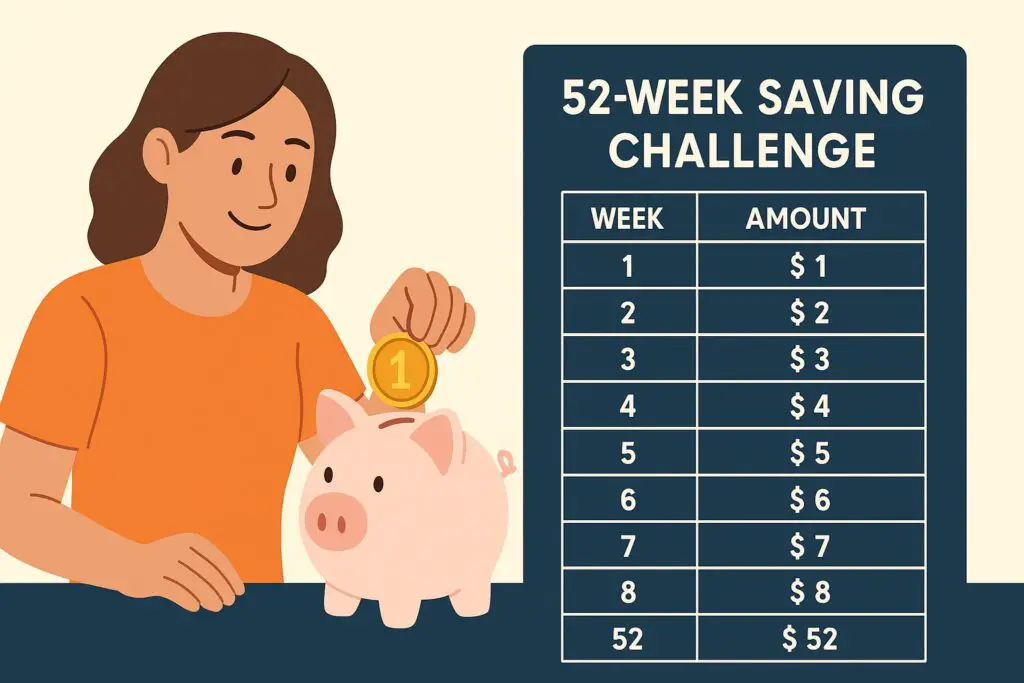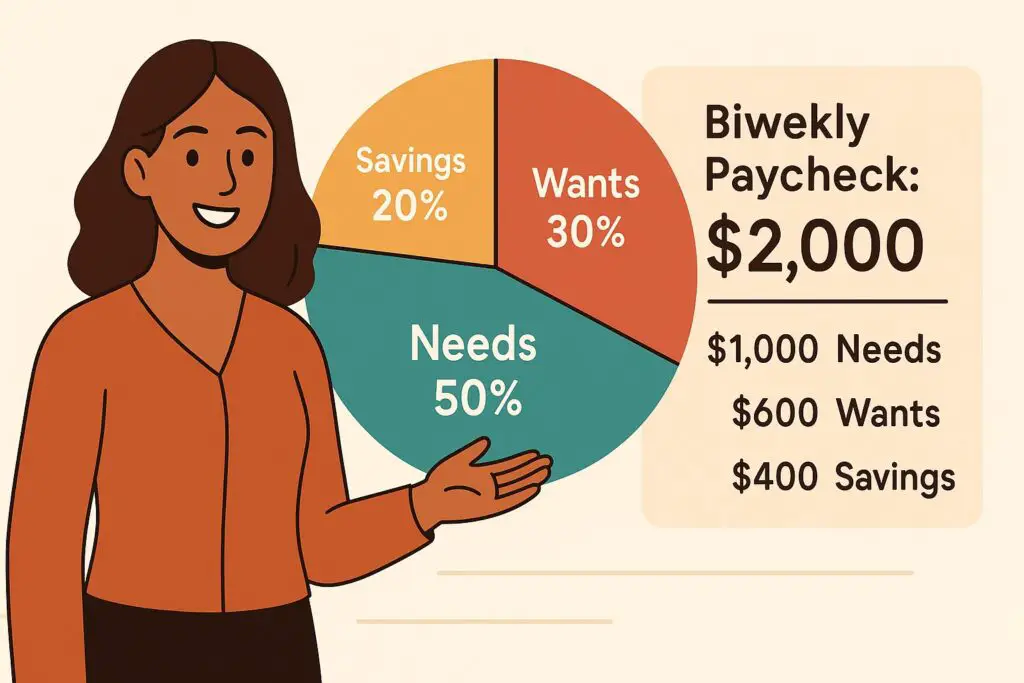Saving money can be difficult, especially when you’re dealing with bills, daily expenses, and unexpected costs. But what if there was a way for you to save up without feeling the pinch? Biweekly money saving is a practical and stress-free method that can potentially grow your savings over time without having to overhaul your entire budget. This article will share some easy tips with you, guiding you on how to save money biweekly, helping you reach your financial goals without having it feel like a drag.
What is saving money biweekly?
Biweekly money saving is setting aside a portion of your income every two weeks, typically in line with your paycheck schedule. Instead of saving monthly, setting aside a small amount every two weeks can help you save smaller amounts more often, that is 26 times a year.
This method encourages consistent and manageable saving habits that can help you save for an emergency situation, future financial goals, or planning for large expenses without having to utilize your entire budget.
Set a savings goal
Before you get to saving, it is important to have a clear purpose and strategy in mind. Ask yourself questions like
- What am I saving for?
- When do I want to reach this goal?
- How much do I need?
Whether it’s $1,000 for an emergency fund, $2,000 to help your kid get into college or $5,000 for a nice and fun family vacation, it’s better to have a plan in mind to give your savings a meaning and help you stay motivated and consistent in the process!
Tip: Break the goal into smaller, biweekly chunks. For example, if you want to save around $5000 at the end of the year, you need to save almost $193 every two weeks.
Use the 50/30/20 rule
A simple budgeting framework can be your go-to when thinking of effective plans or strategies to save money biweekly. The 50/30/20 rule is a similar and simple budgeting technique to help you allocate your take-home pay in a helpful manner.
According to this rule, 50% of your pay goes to your needs. For example paying rent, utilities, groceries, and insurance would take up 50% of your income. 30% of your pay goes to your wants. This includes dining out with family and friends, subscriptions, entertainment, and other fun activities. Lastly, 20% of your pay would be used up for saving for an emergency fund, debt repayment, or any other future financial goals.
Let’s say your biweekly paycheck is $2,000, the allocation of the income according to the 50/30/20 rule would include $1000 spent on needs, $600 on wants, and $400 on savings.
The 52-week saving challenge

For a simple yet powerful strategy to save money biweekly more effectively, 52-week saving challenge is your answer! This method involves building up the savings gradually over the course of a year.
It works by having you save a small amount each week, starting with $1 in week one, $2 in week 2, $3 in week 3 and so on until you reach $52 in week 52. By the end of 52 weeks, you’ll have saved a total of $1,378, without having to put a lot of effort and making any drastic changes to your lifestyle.
Whether you’re saving for an emergency fund, a getaway holiday, or any future financial goal, the 52-week challenge turns savings into a much more fun and manageable habit. Especially when paired with a physical or digital tracker to stay in touch with the progress, this challenge can help you stay motivated and accountable when it comes to saving effectively.
Pay yourself first
One of the most powerful tools when it comes to saving money is paying yourself first, which simply put, means saving money and setting some aside before you get to spend it.
A helpful way to carry out this practical method is to set up an automatic transfer to your savings account on the pay day. This way, saving becomes effortless and more manageable. This useful method also makes you less tempted to spend what you meant to save, making it one of the top strategies to save money biweekly.
Use a biweekly budget plan

Budgeting biweekly requires a different approach than budgeting monthly. This approach requires a bit of adjustment as big expenses such car payments or rents are due once a month, not every two weeks. To make this method work, you need to set aside half of those monthly bills from each paycheck.
At the same time, plan your everyday spending like gas, groceries, and fun in such a way that they match your pay schedule.
| Category | Biweekly Amount |
| Rent and other utilities | $700 |
| Groceries | $200 |
| Gas and Transport | $100 |
| Savings | $300 |
| Fun and Dining | $150 |
| Emergency Situations | $50 |
This method helps you spend your money like each dollar has a purpose and a job to complete.
Cut non-essential spendings
To speed up the saving process, another helpful way is to cut non-essential spendings. Look for areas where you can cut off money both permanently and temporarily. This method can help you save up money more effectively and quickly, making the process a bit easier.
Some non-essential spendings may include cancelling unused and unnecessary subscriptions, cooking more meals at home and avoiding takeouts and dining out, shopping with a list to avoid impulse purchasing, and switching to generic brands.
Even small changes, like cutting off coffee purchase for $5 daily can help you save around $130 biweekly or over $3,300 a year!
Try the envelope or jar method
For a hands-on budgeting technique, try the envelope or jar method which includes dividing your expenses into categories and using practical tools like envelopes or jars for holding the defined amount. Once the money runs out in the envelope or jar for a specific category, you stop spending on it. This practical method creates natural spending limits and helps create discipline for future financial saving goals.
If you’re more into digital tools, apps like Goodbudget can make saving money easier. These apps help you track expenses, monitor your budget, and help you stay organized and consistent with your biweekly savings plan.
Save extra paychecks
Since you get 26 paychecks per year, two months will give you an extra paycheck, as compared to someone saving money monthly.
To save money more efficiently, you can use these bonus pay periods to increase saving contributions, pay off high interest debts, build an emergency cushion, or treat yourself responsibly.
For example, if your usual biweekly pay is $1,500 and March gives your three paychecks, you could save $1,500 extra that month!
The key is to plan ahead for these extra paychecks as they can become powerful tools for you to accelerate the saving process, reduce stress, and achieve greater financial security in the future.
Track your progress
One of the most effective ways to stay consistent with your biweekly savings plan is to monitor the progress regularly. Tracking the progress not only keeps you in touch but also helps you stay motivated by showing you how far you’ve come, even if the process seems small at first.
Some practical ways to track your savings can include using a simple spreadsheet, whether Excel or Google sheets, using budgeting apps like YNAB or Rocket Money, and creating a visual saving tracker such as a printable chart with progress bars and goal meters.
By tracking your progress regularly, you can potentially be more aware of your habits, and can adjust them accordingly to help make the savings plan work better.
Split the paycheck
When your paycheck arrives, it’s tempting to keep the whole amount in one account and spend it the way you like. But doing so can potentially blur the line between money for necessities and money for entertainment. One effective way to avoid this is to automatically split the paycheck into multiple accounts.
You can set three separate bank accounts or sub-accounts. One can be the bills account that is for fixed monthly expenses like rents, utilities, insurance, or phone bills. One can be a fun spending account that covers flexible expenses like groceries, gas, takeouts, or shopping. The last one can be the savings account that can help you save up for future expenses or goals that you desire to fulfill.
Conclusion
Saving money biweekly can be a game-changer for greater financial security and stability in the future, especially when your budgeting aligns with your pay schedule. By using effective strategies like the 50/30/20 rule, the 52-week saving challenge, the paying yourself first strategy, and tracking the progress regularly, you can create an effective habit that fits naturally into your lifestyle. With a clear path and purpose, saving every two weeks becomes less of a chore and more a confident step towards a future with financial security!
